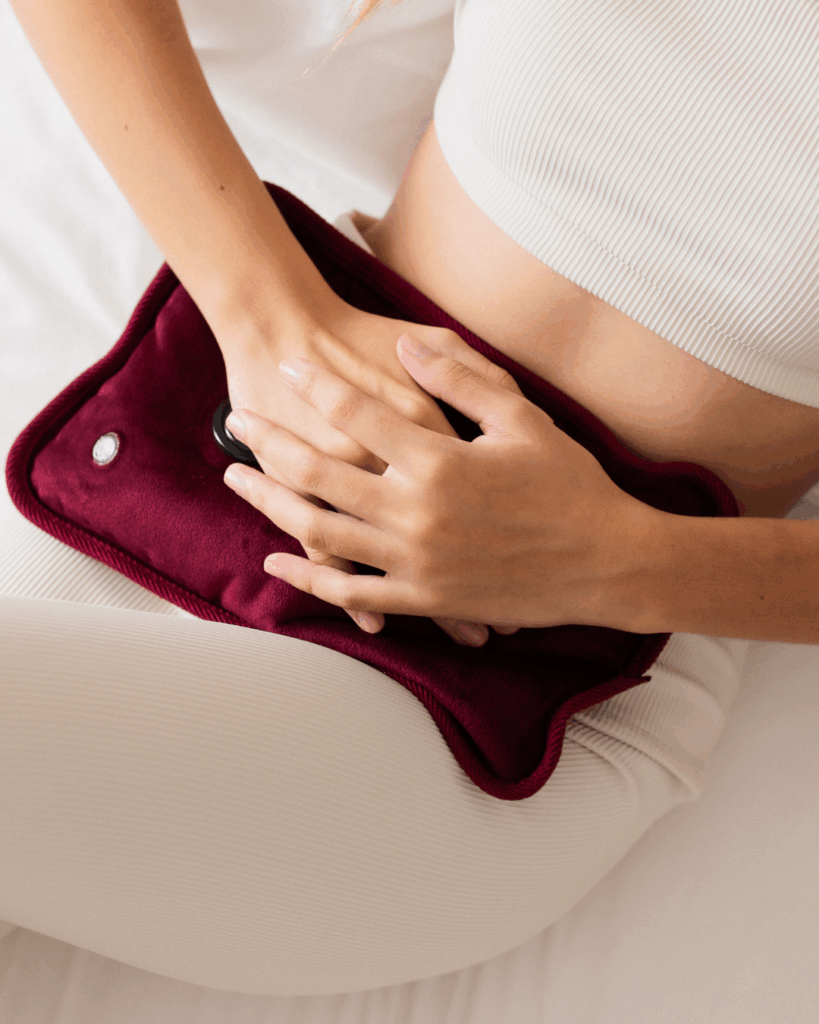Written by Lisa Edmondson – Women’s Health and Hormone Lead – Nurse and Master Health Coach
Endometriosis (“endo”) affects an estimated 1 in 10 women and people assigned female at birth during their reproductive years. Many are being diagnosed earlier—sometimes in their teens. Is this just better recognition, or are cases actually increasing? And most importantly: what can we do to reduce pain, protect fertility, and improve daily life?
Are We Seeing More Endometriosis—Or Just Finding It Sooner?
1) Better recognition (yes):
- Public awareness (social media, advocacy), updated clinical guidance, and greater willingness to listen to period pain have shortened the path to diagnosis for many.
- Primary care and gynae teams are now more likely to recognise patterns such as severe dysmenorrhoea, bowel/bladder pain around periods, dyspareunia, and subfertility.
- Improved imaging and access to specialist care also help—though laparoscopy remains the gold standard for diagnosis in many cases.
2) A true rise (likely, at least in part):
- Earlier menarche, fewer pregnancies, and more cumulative menstrual cycles across a lifetime can increase exposure to inflammatory signals that may fuel endo.
- Population shifts in chronic inflammation (e.g., metabolic health, sleep loss, stress) may create a biological environment where symptoms express more readily.
- Microbiome changes (gut, vaginal) and immune dysregulation are under active study.
3) Environmental factors (plausible contributors):
- Endocrine-disrupting chemicals (EDCs) such as phthalates, BPA, and certain dioxins show associations with endometriosis risk in observational studies. While causation isn’t proven, practical exposure-reduction steps are reasonable (see below).
Bottom line: We are both recognising endometriosis earlier and likely seeing real drivers that increase risk or symptom expression.
Why Younger Women Are Showing Up More
- Lower tolerance for “periods as suffering”: Teens and young adults are more likely to seek help—and be heard.
- Cycle tracking: Apps make symptom patterns obvious.
- Sport & study impact: Pain that disrupts school, work, or athletics prompts care sooner.
- Comorbidities: IBS-like symptoms, migraines, or pelvic floor dysfunction may trigger earlier referrals.
What Helps: A Whole-Person Plan for Pain, Daily Function, and Fertility
No single therapy works for everyone. Most people do best with a personalised, layered approach that addresses pain pathways, hormones, inflammation, pelvic mechanics, and mental-emotional load.
1) Medical Options (discuss with your clinician)
- Analgesia: NSAIDs around menses; heat and TENS can help.
- Hormonal therapies: Combined oral contraceptives, progestin-only pills, levonorgestrel IUD, dienogest, or GnRH analogues/antagonists may suppress lesions and reduce pain.
- Surgery: Laparoscopic excision/ablation can relieve pain and may improve fertility, especially with moderate–severe disease. Choose an experienced endometriosis surgeon.
2) Pelvic-Focused Care
- Pelvic floor physiotherapy: Addresses muscle guarding, trigger points, and pain with intercourse.
- Bowel & bladder strategies: Timed voiding, gentle fibre titration, and—when IBS-type symptoms dominate—a time-limited low-FODMAP trial with a dietitian, followed by structured re-introduction.
3) Nutrition for Inflammation & Hormone Balance
- Pattern first: Mediterranean-style eating (colourful plants, legumes, nuts, seeds, whole grains, olive oil, fish) supports anti-inflammatory pathways.
- Omega-3 rich foods (or EPA/DHA supplements if advised) may help dysmenorrhoea.
- Adequate protein & iron: Heavy periods can deplete iron—screen and treat if low.
- Reduce ultra-processed foods and excess alcohol; consider caffeine moderation if it worsens symptoms.
- Helpful additions (discuss for suitability): Curcumin, magnesium glycinate, vitamin D (replete if low).
4) Lifestyle Foundations
- Movement: Regular, moderate exercise improves pain modulation and pelvic blood flow (walks, swimming, Pilates, light strength).
- Sleep: Consistent sleep stabilises inflammatory signalling and pain thresholds.
- Stress care: Mindfulness, breathwork, yoga, or counselling to reduce central sensitisation (the nervous system “turning up the volume” on pain).
- Heat therapy & pacing: Heat packs during flares; activity pacing to avoid boom-and-bust cycles.
5) Environmental Load—Practical Reductions
- Choose glass or stainless over plastic for hot foods; don’t microwave plastics.
- Prefer fragrance-free or low-scent personal and cleaning products.
- Ventilate your home; wash hands before eating; limit thermal paper receipts.
- Eat more whole foods; when possible, wash produce thoroughly.
6) Fertility & Conception Support
- Timing: If you’re trying to conceive and have significant pain or cycle disturbance, consider earlier referral to a fertility specialist.
- After excision surgery, a six–twelve-month window can be favourable for conception in some cases.
- Preconception basics: Folate, iron/B12 (if low), vitamin D repletion, thyroid screening if indicated, healthy BMI, and metabolic health.
- Fertility pathways: From timed intercourse and IUI to IVF, choose a plan aligned with disease severity and age.
Can Endometriosis Damage Be Reversed?
- Lesions don’t “reverse” on their own, but symptoms and progression can often be reduced with the right mix of surgical and conservative care.
- Early, effective management can protect quality of life and may improve fertility prospects.
- Pregnancy is not a cure; some symptoms improve during pregnancy, but endo often persists.
When to Seek Help—Red Flags
- Severe period pain that disrupts school/work or wakes you at night
- Pain with sex, bowel movements, or urination (especially around menses)
- Heavy bleeding, anaemia, or cycles <24 or >35 days
- Fertility concerns after 6–12 months of trying (sooner if pain is severe or you’re ≥35)
The Takeaway
We’re diagnosing endometriosis earlier thanks to better awareness—and there may also be real shifts (hormonal, immune, environmental) increasing symptom expression. A personalised, whole-person plan can meaningfully reduce pain, improve day-to-day function, and support fertility.
Ready to Build Your Personal Endo Plan?
At Global Health, we combine science, nutritional, and mind-body strategies to help you take control of symptoms and pursue your goals—whether that’s less pain, better periods, or preparing for pregnancy.
Book a consultation to get a plan tailored to you.

